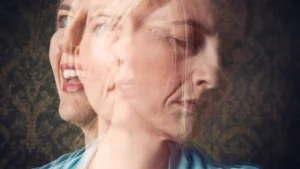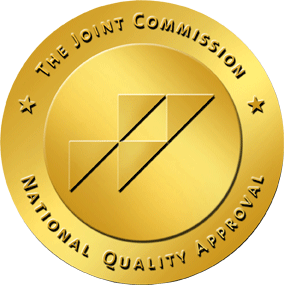If you’re dealing with complex PTSD (post-traumatic stress disorder), you know how hard it can be to heal and move forward. Complex PTSD isn’t just about one traumatic event; it comes from long-lasting trauma that affects many parts of your life.
Understanding what Complex PTSD is, how it impacts your healing, and identifying when to seek help can support your road to healing.

Complex PTSD Is More Than Just Trauma
With regular PTSD, you might deal with flashbacks, nightmares, and strong anxiety about a single horrifying event, like a car crash or a natural disaster. CPTSD includes all that, but it goes deeper. It happens when you go through long-term or repeated trauma. This often includes childhood abuse, ongoing neglect, or being in a toxic relationship for years.
Dr. Judith Herman, a Harvard researcher, first described this condition in 1988. She believed regular PTSD didn’t fully explain the deep emotional and mental damage caused by repeated trauma.1
If you have CPTSD, you might experience the usual symptoms of PTSD, but also include strong feelings of shame, thinking you’re broken or helpless, avoiding people, feeling hopeless, acting angry or numb, and even changes in your personality.
Right now, CPTSD isn’t an official diagnosis in the Diagnostic and Statistical Manual of Mental Disorders (DSM-5), the book doctors use to diagnose mental health conditions.2 That’s because more research is still needed, but studies are ongoing.
Root Causes of Complex PTSD
The root causes of CPTSD include the following:
1. Early and Repeated Trauma
If you went through trauma early in life, such as ongoing abuse, neglect, or violence from someone close to you, it can deeply affect your emotional and mental development. Research shows that people with CPTSD often experienced trauma that started early and was caused by someone they knew, such as a family member or caregiver.1
2. Long-Term Abuse or Neglect
CPTSD is commonly linked to situations where you faced long-term abuse or neglect. This includes experiences like childhood abuse, domestic violence, or being in a war zone. These prolonged traumas can lead to feelings of helplessness and make it hard to trust others.2
3. Trauma from Close Relationships
When the person causing you harm is someone you depend on or are close to, like a parent or partner, it can be especially damaging. This kind of betrayal can lead to deep emotional wounds and make recovery more challenging.
4. Multiple Traumatic Events
Experiencing several traumatic events over time can increase the risk of developing CPTSD. Each event adds to the emotional burden, making it harder to cope and heal.
5. Lack of Support After Trauma
Not having support from others after experiencing trauma can make things worse. Without someone to talk to or help you process what happened, feelings of isolation and distress can grow, contributing to the development of CPTSD.
Understanding these root causes is important because it helps you recognize why you might be feeling the way you do.
How Complex PTSD Fuels Addiction and Mental Health Struggles
CPTSD often involves ongoing trauma, such as prolonged abuse or neglect. This can lead to feelings of helplessness, fear, and a constant state of alertness. To manage these feelings, you might use substances to numb the pain or escape the distressing memories. This behavior is known as “self-medication.”
Individuals with PTSD are more likely to develop substance use disorders (SUDs) as a way to cope with their symptoms. This pattern is also observed in those with CPTSD.
Using substances might provide short-term relief, but it can create a cycle that’s hard to break. The temporary escape can lead to dependence, and over time, the substances can exacerbate the symptoms of CPTSD. This cycle can make it even more challenging to manage emotions and can lead to additional mental health issues like depression and anxiety.
Recognizing the link between CPTSD and substance use is an essential step toward healing. Integrated treatment approaches that address both trauma and substance use have shown promising outcomes
The Importance of Dual Diagnosis in Treatment
When you try to deal with only your addiction without understanding the emotional pain underneath, you might find yourself using again. And if you only treat your mental health but keep using substances, the treatment won’t be as effective. That’s why dual diagnosis treatment is so important; it helps you heal on every level.
In dual diagnosis programs, your treatment plan will include support for both your mental health and your substance use. Here are a few ways it’s done:
- Therapy – You’ll talk with a counselor about your thoughts, feelings, and past trauma. This might include forms of behavioral therapy, such as cognitive behavioral therapy (CBT) and dialectical behavior therapy (DBT).
- Experiential Therapy – This is a hands-on, activity-based therapeutic technique. You might do things like art, music, role-playing, or even outdoor activities. Experiential family therapy also brings your family into the healing process. This helps build trust, communication, and support.
- Group Support – You’ll meet others who are also healing from both addiction and mental health struggles. Sharing your story and hearing theirs can help you feel less alone.
- Medication (if needed) – Sometimes, medication can help you manage things like anxiety, depression, or sleep problems while you work through therapy.
- Mind-body Practices – Activities like yoga, meditation, or mindfulness exercises may also be included to help you calm your body and mind.
With the right tools and support, they can help you reconnect with yourself, rebuild your relationships, and find healthier ways to cope with pain.
Knowing When to Reach Out for Help
It’s not always easy to know when to ask for help. But reaching out is a strong and important step toward feeling better.
You should consider getting help if you notice signs, such as:
- Feeling stuck in painful memories
- Having trouble trusting others
- Feeling very alone
- Using drugs or alcohol to cope
- When your feelings interfere with daily life, such as:
- Work
- School
- Relationships
- Work
These are signs that getting professional help can make a difference.
You don’t have to wait until things get worse. The sooner you reach out, the sooner you can start healing and learning new ways to cope.
If you’re dealing with Complex PTSD and unsure where to start, OceanRock Health can guide you through your recovery. We offer expert care designed to support you every step of the way.

Sources:
- Giourou, E., Skokou, M., Andrew, S. P., Alexopoulou, K., Gourzis, P., & Jelastopulu, E. (2018). Complex posttraumatic stress disorder: The need to consolidate a distinct clinical syndrome or to reevaluate features of psychiatric disorders following interpersonal trauma? World Journal of Psychiatry, 8(1), 12–19. https://doi.org/10.5498/wjp.v8.i1.12
- U.S. Department of Veteran Affairs. (2014). Complex PTSD – PTSD: National Center for PTSD. Va.gov. https://www.ptsd.va.gov/professional/treat/essentials/complex_ptsd.asp
- Guzman Torres, E., Krause-Utz, A., & Sack, M. (2023). Predictors of complex PTSD: the role of trauma characteristics, dissociation, and comorbid psychopathology. Borderline Personality Disorder and Emotion Dysregulation, 10(1). https://doi.org/10.1186/s40479-022-00208-7
- Marinova, Z., & Maercker, A. (2015). Biological correlates of complex posttraumatic stress disorder—state of research and future directions. European Journal of Psychotraumatology, 6(1), 25913. https://doi.org/10.3402/ejpt.v6.25913









